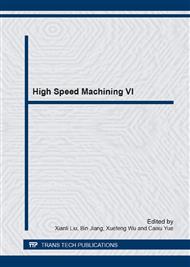p.332
p.337
p.342
p.348
p.353
p.358
p.363
p.368
p.374
High-Speed Cutting Finite Element Model Parametric Modeling Based on ABAQUS
Abstract:
In traditional model of high-speed cutting, each modeling or modify process, material parameters input, boundary conditions set take up a lot of time, the solution process has blindness and not easy to operate. this article uses the python language, based on ABAQUS to secondary development of cutting simulation model in pre-treatment, establish exclusive two-dimensional cutting simulation interface, realization the parametric settings of tool angle, the size of the tool and the workpiece, cutting parameters, parametric design can shorten the time of modeling, and lay the foundation for the establishment of the high efficiency and high accuracy of the simulation model.
Info:
Periodical:
Pages:
353-357
Citation:
Online since:
July 2014
Authors:
Price:
Сopyright:
© 2014 Trans Tech Publications Ltd. All Rights Reserved
Share:
Citation:


